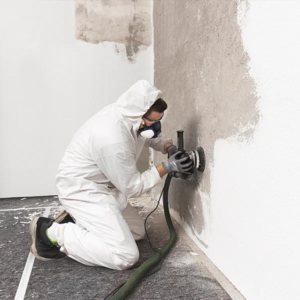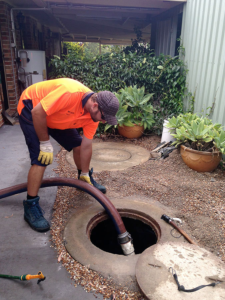Mold Inspection Staten Island determines whether visible signs of mold are present in your home and the types of fungi that may be growing there. Your inspector will also take air and surface samples and send them to a laboratory for analysis.
The simplest sample is a swab, which immediately determines the presence of fungal spores but not the specific types. Air testing is also common and more accurate than swab sampling.

As the first step in a mold inspection, a qualified inspector will visually examine the entire building. This will include a complete walk through the interior and exterior of the property with special focus on basements, attics, and areas of moisture intrusion.
The inspector will look for visible signs of mold growth such as dark spots, green or gray streaks, black specks, and white fluffy formations (not to be confused with a mineral formation called efflorescence). Musty odors and other indications of excess humidity are also important clues to the presence of mold in a home.
If the inspector discovers evidence of a potential mold problem, they may recommend air and surface sampling to determine if mold is present in the indoor air. This can be a costly process and is often unnecessary. If the mold problems are only limited to one area of the home, a limited visual examination can be used instead.
Xenia’s Mold Inspection Checklist makes it easy for real estate professionals to identify and address mold issues in properties before they are sold. If left untreated, mold can damage a property and cause health issues for residents. The inspection checklist allows real estate professionals to get the issues resolved before completing the sale and save the buyer the cost of remediation.
Mold problems can also be expensive to fix, and they can significantly decrease the value of a property. For this reason, buyers should always get a mold inspection prior to buying a property. Mold inspections can be completed by qualified, certified inspectors who use a thorough checklist and scientific methods to solve mold problems.
It is possible to prevent mold growth with regular maintenance and regular cleaning of the property. It is recommended that homeowners clean gutters regularly, repair leaky roofs promptly, and ensure proper ventilation in bathrooms and other areas prone to moisture. In addition, dehumidifiers can be used to help control moisture levels. The most effective way to reduce the risk of mold is to eliminate the underlying moisture issue that promotes it.
Air Sampling
In order to determine the concentration of mold spores inside a building, it is often necessary to take air samples. This is especially important in homes that have recently undergone any sort of water damage or flood. In order to ensure the integrity of the sample, it is crucial that all windows remain closed (except during normal entry and exit) during the sampling period. Also, the indoor air should be sampled at the same time as the outdoor air in order to provide a valid comparison.
This process typically involves a pump, a measurement device, and a spore collector. The spore collector is filled with a solution that contains a preservative. A cellulose swab is then inserted into the device and allowed to collect spores. Once the swab is full, it is removed and sent off to a laboratory for analysis. In order to ensure that the swab is free of bacteria and other contaminants, the mold inspector should clean and sterilize his or her hands before collecting the sample.
The inspector will also likely take surface samples in any areas of concern. This is because it is not always possible to know whether or not a specific area of visible apparent mold is actually mold, or simply a mineral formation such as efflorescence.
Depending on the type of mold, further tests may be required. These tests can include microscopic examination of the sample, identification of a specific species of mold (if known), and/or a test for mVOCs. In some cases, the presence of mVOCs can indicate that a problem is due to an ongoing moisture issue and not due to an existing mold issue.
A professional mold inspection is a great way to get peace of mind before you move into your new home. It can also be a vital step in doing your due diligence prior to purchasing a home that you are thinking about selling. Using an independent inspector is the best way to make sure that you are not being taken advantage of by someone who has a financial interest in the mold remediation process.
Surface Sampling
Surface sampling is an important part of a mold inspection. This is because it can help to identify the presence of fungi, which may be missed by visual assessment. During a surface sample, a swab is used to collect a small amount of material from the affected area. This is then sent to a lab for testing. The lab can then determine whether the swab contains mold and what species of mold it does contain.
The swab is usually made of cellulose and comes inside a plastic tube container. The swab is then moistened with a preservative, which is stored in an ampoule at one end of the tube. When the swab is pressed against the surface of the affected area, the preservative helps to prevent the growth of new microorganisms on the swab. The swab is then placed back into the tube and sent to the laboratory for analysis.
Various types of surface samples can be collected in a mold inspection, depending on the specific needs of the project at hand. There are kits that provide all or most of the necessary items needed to collect the samples and send them off to the laboratory for analysis. These kits typically include the sample media, shipping supplies, forms and instructions.
For a general mold inspection, a tape sample is often the best method for determining the type and quantity of visible mold present on a surface. A small piece of a tape is applied to the surface being tested and a chain-of-custody document is recorded with a sample number, location, date and time stamp. A swab sample can also be taken from the visible mold using a special sampling device known as a “spore trap.” A low volume air pump pulls air into a cassette that holds a slide with adhesive. Both viable and non-viable spores stick to the slide, which is then read under a microscope to determine the species and quantity of mold present.
In addition to the sampling methods outlined above, it is possible for inspectors to use thermal imaging cameras to scan hard-to-reach areas, such as behind walls and in wall cavities. In some cases, these devices can even be used to locate leaks.
Laboratory Testing
Whether you’re a home buyer and need to schedule a mold inspection as part of your due diligence, or a homeowner that’s experiencing symptoms such as musty odors, visible mold growth or water damage, laboratory testing may be necessary. Mold spores are easily spread by air and can land on damp surfaces inside your home, where they can continue to grow and thrive. While laboratory tests can help identify the type and quantity of mold spores present, they are never a substitute for a visual inspection.
There are two main types of lab tests used for mold: air and surface. Both require samples to be collected and sent to a laboratory for analysis, with results typically available in 10 days. In general, air samples are taken using a special pump that draws a sample from the atmosphere in a room or specific area. A spore count then determines the amount of fungus in the air and can identify specific fungi such as Stachybotrys or Chaetomium. Surface samples are taken using a petri dish-style kit that identifies the presence of one or more common mold species. A sample is taken and placed in a container for shipping to the lab, and the results are analyzed with a microscope to identify the specific species of mold.
Once results are available, the inspector will discuss the findings with the client and recommend a course of action. This may include performing a remediation plan to safely remove existing mold and prevent it from returning, or taking steps to ensure the root cause of the problem is fixed, such as fixing leaks promptly, cleaning gutters, and ensuring proper drainage around the house.
While a mold inspection falls outside of InterNACHI’s Residential Standards of Practice, the use of thermal imaging and moisture testing can make this an excellent service to offer to clients. Especially when combined with a thorough visual inspection, mold testing can provide valuable clues to hidden problems that might otherwise go unnoticed. It’s a great way to provide peace of mind for your clients and ensure that you’re offering the services that your customers deserve.








